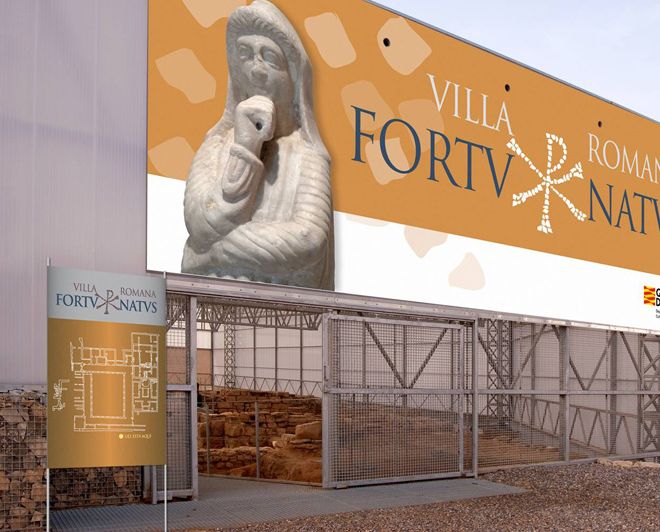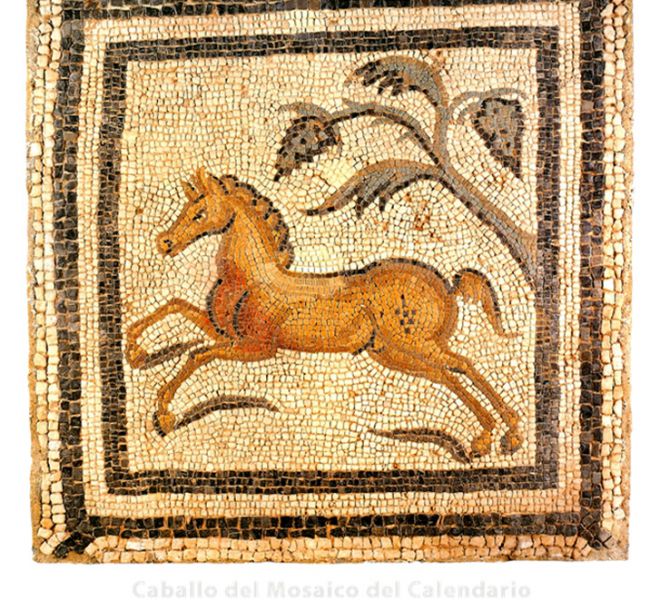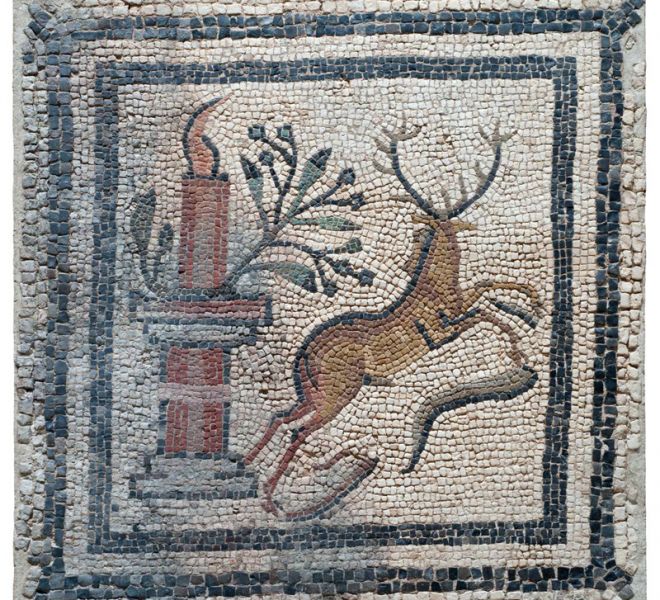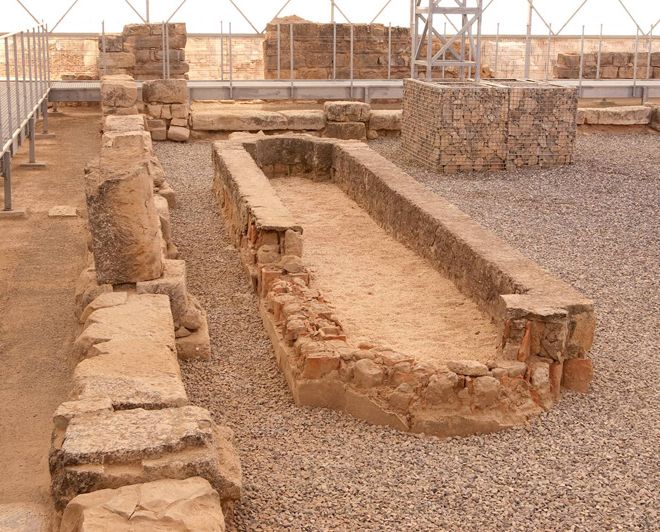“Así, pues, en primer lugar,
la razón de una buena elección y
cultivo del campo estriba en cuatro factores: aire, agua, tierra y labor”.
(Palladio. De re rustica,I,II).
Villa Fortunatus lies 5 kilometers north from Fraga, beside Cinca river. It is a roman villa which was built in the 2nd century, although it was renovated and enlarged at the end of 3rd century or the begining of the 4th century, and it was also then decorated with rich mosaic pavements.
The leisure areas of the residence include a great 350 square feet central garden-courtyard, with a pond decorated with a fishes mosaic.
The public area of the villa is also the main part of the building. There is a room in the central zone (tablinum) were the mosaic with the inscription “FORTU-NATUS” was found. It was interpreted as the name of the owner of the villa, and it is accompanied with a christian “Chi-Rho” monogram were the greek letters alpha and omega were represented inverted.
Some of the mosaics of the villa remain in its place at the building, but the most important ones were taken to the Museo de Zaragoza. Amongst them are various scenes of a roman calendar, other representations of deities as Venus, Eros and Psyche, and some christian motives like the “Chi-Ro” monogram.
In the 5th century there is a renovation of the villa including the construction of a paleochristian basilica inside the complex. It has a free-standing header, square shaped in the outside and round shaped inside. It is one of the first paleochristian churches built in Spain.









